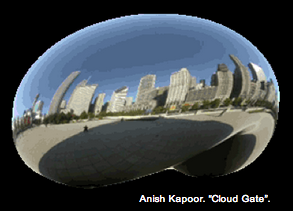
Calypso Montouchet
INTO THE LOOKING GLASS
Though we grow up interacting with them on a daily basis, though the myth of Narcissus walks us through 6th grade English class and Descartes's theories on specular reflection through 8th grade physics, we never seem to grow tired of them - nor to fully understand them. We know that mirrors invert right and left, but not top and bottom. We do not know that the mirror-image is exactly half the size of the object or that the size of our projection remains the same regardless of how close we are to the mirror. We are aware that the mirror is just a surface of silver-lined glass, yet we persist in imagining the space that lies beyond it, be it Lewis Carroll's wonderful land, Harry Potter's deepest desires or the realm of the dead.
Much of the information regarding mirrors is similarly geared towards the ways in which mirrors allow us to internalize information provided by specular images, yet mirrors are equally often used to widen our horizons, occasionally reaching out to fiction, superstition or mere optical illusion. For this reason, my analysis of mirror’s impact on humans will be multi-disciplinary, and evidence from different sources, ranging from scientific studies to literary works will be employed so as to discard neither objective, statistical data nor subjective, perceptual experience. I propose to explore the variety of these aspects, arguing that mirrors allow us to both complete and expand our perception of our environment and ourselves, and, in parallel, to materialize the results of my research and reflections with an installation.
Advisers: Russell Epstein (PSYC) | Gwendolyn Shaw (ARTH) | Jackie Tileston (FNAR)

 Visual Studies
Visual Studies